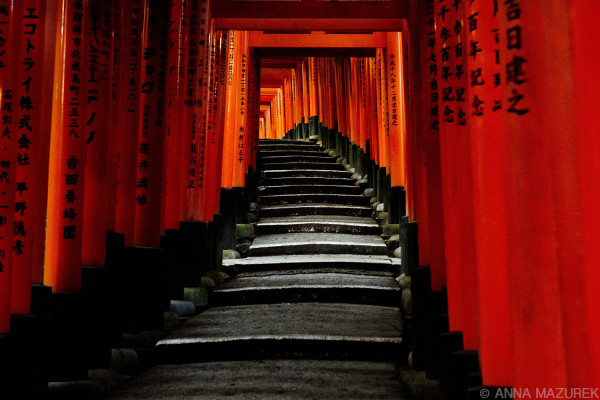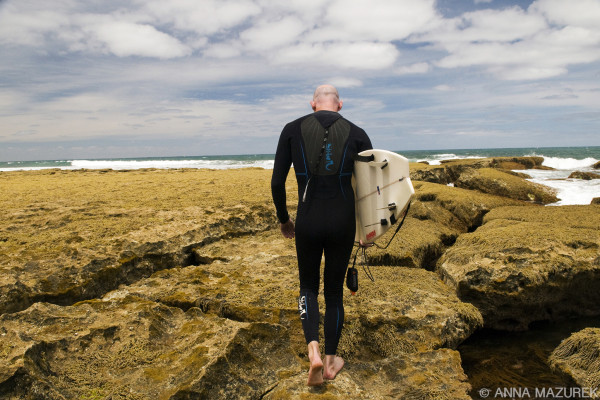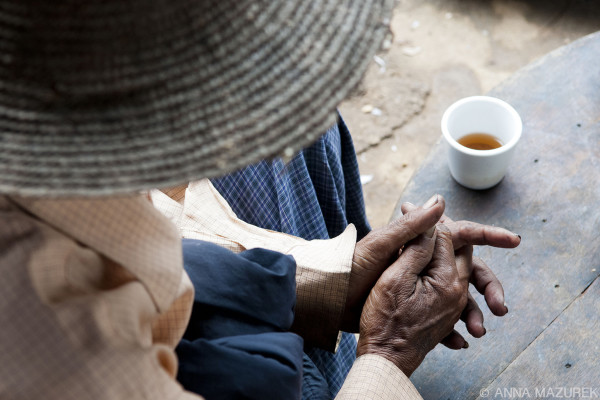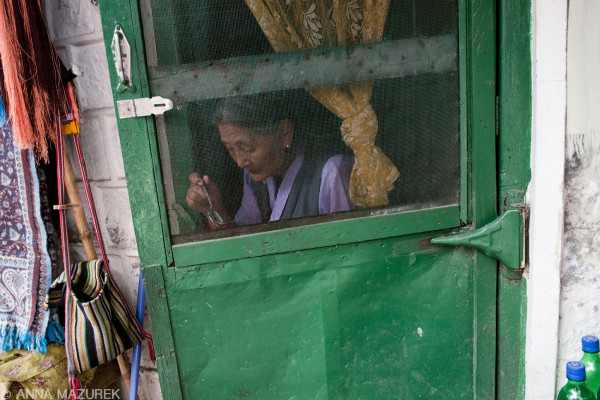My alarm went off at 4:30 a.m. Determination masked my sleepiness. My goal was simple – to photograph the famous Fushimi Inari Shrine in Kyoto, Japan without any people. The early bird gets the photo.
For the past eight years, I have roamed the world with my camera working as a freelance photographer and managing photo trips in Asia. I quickly learned the secret to travel photography is getting up painfully early. The reward is silence, photos with clean backgrounds and a glimpse of the real culture.
Whether you are shooting with an iPhone 6 or a DSLR, these five tips will help polish your photography skills for your next adventure.
1. Strong Composition
The quality of a photograph is directly related to the composition. Focus on filling the frame to only include essential elements and crop out distractions. Create depth, perspective, scale and balance with your camera angle. Use leading lines to guide the eye around the frame. In the photo above, I used the curve of the stairs to grab the viewer’s attention and lead their eye through the image from bottom to top. If the composition isn’t quite right, I wait for something to complete it. In the image below, a surfer walked by completing my image in Bells Beach, Australia.
2. Clean Backgrounds
Let’s be honest – no one looks good with a tree branch sticking out of the side of their head. Power lines, trees, street lamps are notorious for sabotaging the best of photos. The easiest way to improve your photography is to avoid distracting background elements by changing your position or moving your subject. Shooting from a lower angle and using a wide aperture will also help crop out or blur any distractions. Exclude any overly bright colors from the image that draw attention away from the subject.
3. Chase the Light
When you find a location you want to photograph, go back multiple times during the day to document the changing light. Pay close attention to the quality and direction of both natural and artificial light. Haze, mist and fog act as a filter, which can mute colors and reduce contrast. Hold your hand into the light to determine the direction and type of shadows. This allows you to choose your angle and position your subject appropriately. Avoid portraits in harsh mid-day light because it produces dark, unflattering shadows under the eye.
The best time of day for photography is known as the “Magic Hour” – thirty minutes before and after sunrise/sunset when light is softer and more dynamic. The best sunset photos are usually before or after a storm when haze/clouds add a dramatic effect to the sky. The ideal time for a sunset photo is after a late afternoon storm.
4. People & Details
Photographing strangers is easier than you think. Simply start a conversation. People love to talk about themselves. Consider putting away your camera and asking to come back later to take a photograph. In unfamiliar cultures, research local customs and taboos. Learn the basic words for “hello” and “thank you.” If you want to take a photo, point to your camera, smile and give a thumbs up sign. Their reaction will be your answer. Remember if someone says no, they are saying no to the camera and not to you. Do not take it personally.
For portraits, focus on the eyes or interesting features. Avoid fake smiles and anticipate behavior. Include details that reveal insight to the subject. A great example is the photo above from a market in Inle Lake in Burma. I walked by an older man having tea, quickly snapped two frames over his shoulder of his hands and kept walking.
5. Shoot from the Hip
My favorite thing to do when I travel is to wander the streets with my camera capturing candid shots of everyday life – children walking to school, the fruit vendor stacking his mangos and the locals chatting with friends. I still shoot the famous spots, but I was trained as a photojournalist and find daily life to be the most fascinating. Street photography is a booming trend in the photo world. It has become a method of understanding and documenting culture. It is based on instinct and preparation. When you see a moment, you must react quickly to capture it before it disappears. French photographer Henri Cartier-Bresson referred to this as “the decisive moment” when all the elements align perfectly.
Shooting from the hip is great way to change the perspective of a photo. It’s great for capturing quiet moments with a unique angle like the image I took above of the women eating her lunch at a market in McLeod Ganj, India.
I simply keep my camera at my side with the exposure manually set for the ambient light with a central focal point and a shutter speed of around 1/250. With an iPhone, it’s very simple. I open my camera app, hold my iPhone horizontally at hip level and use my thumb to press the volume up button, which acts as a shutter release on all iPhones. I do pause for a second when I take an image to make sure the camera has time to focus to prevent motion blur.
Above all, the most important rule of travel photography is to be patient and have fun!
(This is a post I originally wrote for AFAR.com.)





